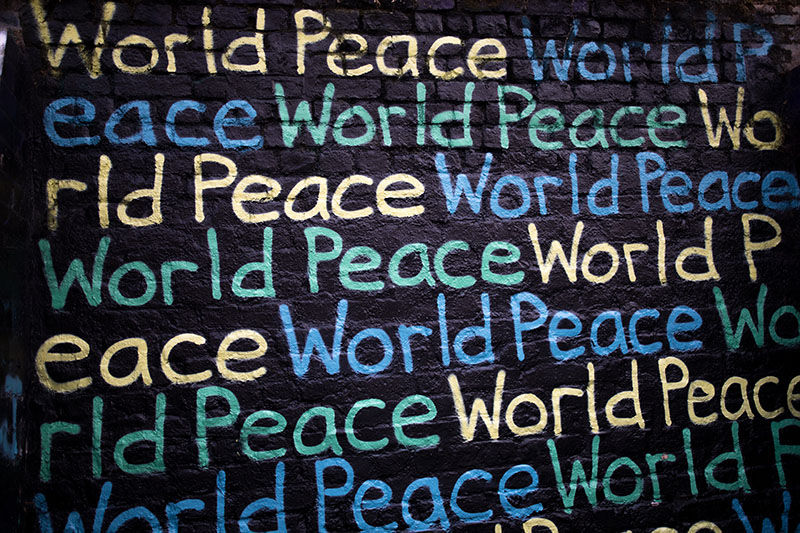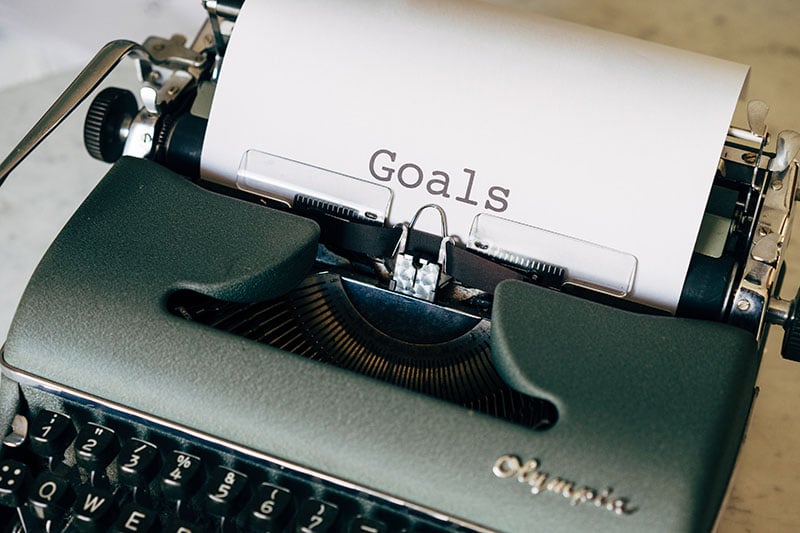Hand Hygiene: Shocking Statistics & How To Take Care of Your Hands
We’ve done the math on how many times nurses perform hand hygiene, plus some shocking facts and a few tips on how to take care of your hands as a nurse.
Our relentless research goes beyond shoes. Capsol allows us to talk all things nursing, from career advice and current news to self-care and mental health. These conversations with you, the community, and the world at large help us put our best foot forward when creating the best nursing shoes on the planet.
In the year 2000, 191 UN member states agreed on a set of eight worldwide goals for the betterment of our planet by 2015. These goals, known as the Millennium Development Goals (MDGs), were signed and agreed upon under the United Nations Millennium Declaration.

See how the Healthy People 2020 goals were achieved here.
While the MDGs all address separate issues, they are also unilaterally interdependent. The eight established MDGs were as follows:
1. Providing universal primary education
2. Reducing child mortality rates
3. Eradication of hunger and poverty
4. Achieving gender equality
5. Establish a global partnership for development
6. Better maternal health
7. Fight HIV/AIDS and other diseases
8. Improve environmental sustainability
At the end of the 15-year target date, the United Nations Development Programme (UNDP) concluded the following:
“The final MDG Report found that the 15-year effort has produced the most successful anti-poverty movement in history:
● Since 1990, the number of people living in extreme poverty has declined by more than half.
● The proportion of undernourished people in the developing regions has fallen by almost half.
● The primary school enrolment rate in the developing regions has reached 91 percent, and many more girls are now in school compared to 15 years ago.
● Remarkable gains have also been made in the fight against HIV/AIDS, malaria and tuberculosis.
● The under-five mortality rate has declined by more than half, and maternal mortality is down 45 percent worldwide.
● The target of halving the proportion of people who lack access to improved sources of water was also met.
The concerted efforts of national governments, the international community, civil society and the private sector have helped expand hope and opportunity for people around the world.”
Hedging on the fantastic results of the MDGs, but seeing that there was more work to do, a new list of goals was agreed on. In 2015, the United Nations established the Sustainable Development Goals (SDGs), with a deadline of 2030.

There’s a great video UNDP produced to explain the transition from MDGs to SDGs that you can watch here.
The new SDGs are expanded and encompass more problems and in better detail; In fact, this time, there are 17 of them. Take a look (Listed in order and as written and defined on UN.Org):
1. No Poverty: Economic growth must be inclusive to provide sustainable jobs and promote equality.
2. Zero Hunger: The food and agriculture sector offers key solutions for development and is central for hunger and poverty eradication.
3. Good Health and Well-Being: Ensuring healthy lives and promoting the well-being of all ages is essential to sustainable development.
4. Quality Education: Obtaining a quality education is the foundation for improving people’s lives and sustainable development.
5. Gender Equality: Gender equality is not only a fundamental human right but a necessary foundation for a peaceful, prosperous and sustainable world.
6. Clean Water and Sanitation: Clean, accessible water for all is an essential part of the world we want to live in.
7. Affordable and Clean Energy: Energy is central to nearly every major challenge and opportunity.
8. Decent Work and Economic Growth: Sustainable economic growth will require societies to create the conditions that allow people to have quality jobs.
9. Industry, Innovation, and Infrastructure: Investments in infrastructure are crucial to achieving sustainable development.
10. Reduced Inequalities: To reduce inequalities, policies should be universal in principle, paying attention to the needs of disadvantaged and marginalized populations.
11. Sustainable Cities and Communities: There needs to be a future in which cities provide opportunities for all, with access to basic services, energy, housing, transportation and more.
12. Responsible Consumption and Production: Responsible Production and Consumption
13. Act Now to Stop Global Warming: Climate change is a global challenge that affects everyone, everywhere.
14. Life Below Water: Careful management of this essential global resource is a key feature of a sustainable future.
15. Life on Land: Sustainably manage forests, combat desertification, halt and reverse land degradation, halt biodiversity loss.
16. Peace, Justice, and Strong Institutions: Access to justice for all, and building effective, accountable institutions at all levels.
17. Partnerships: Revitalize the global partnership for sustainable development.
As of this year, there are now only ten years left before we reach the 2030 deadline for SDG accomplishment; A fact that the United Nations and the World Health Organization (WHO) is all too aware of.
In a recent press release, WHO established that 2020 is “the decade for disease elimination.” In particular, a severe emphasis has been placed on targeting diseases such as HIV, hepatitis, and other sexually transmitted infections for elimination. WHO director a.i. Department of HIV, Hepatitis, STIs, and press release author Dr. Andrew Ball feels that while there have been critical scientific breakthroughs within the past decade, there is still a long way to go, and we’re still not on track to meet the deadline. Dr.Ball goes on to state,
“There continue to be considerable inequities in access to health services across communities, countries and regions; the quality of services in many communities do not meet the standards necessary to maximize impact; and the weakness of broader health systems and unpredictability of funds put into question the long-term sustainability of many programmes.
As we look ahead, the next decade is the countdown to achieving the disease elimination targets as outlined in the 2030 Agenda for Sustainable Development and the Global Health Sector Strategies on HIV, Viral Hepatitis and STIs. These include eliminating AIDS, viral hepatitis and STIs as public health threats and achieving universal health coverage by 2030.”
In the press release, Dr.Ball closes by discussing ten key moments over the past decade that he believes are worth noting and hopes set the tone for the next ten years. These inspiring and remarkable examples are summarized below:
● A new and effective Hepatitis C treatment drug was developed, and accessible plans were established.
● HIV efforts have been ramped up and focused within the populations that need them the most.
● HIV goals established in the previous MDGs were attained, and over 17 million people were reported as receiving HIV treatments.
● The first World Hepatitis Summit was convened by the WHO.
● Thirteen countries saw HIV and Syphilis transmission elimination between mother and child.
● An effective HIV prevention treatment was developed and released for use.
● An emphasis on innovation was placed by the WHO in regards to the eradication of STIs, HIV, and Hepatitis.
● Three new strategies to end HIV, Hepatitis, and STIs were embraced and agreed upon at the 2016 World Health Assembly.
● A focus was placed on halting the drug-resistant epidemic that HIV, gonorrhea, and tuberculosis have been seeing.
● A WHO assessment placed elimination globally of hepatitis at $6 billion total.
While there is still a lot of work to be done, one can’t help but feel a spark of hope when looking at how far we’ve come over the past ten years. Here’s to the next ten and achieving the 2030 SDGs.
References
● WHO, Welcome to 2020 – the decade for disease elimination
● WHO, Millennium Development Goals (MDGs)
https://www.who.int/topics/millennium_development_goals/about/en/
● United Nations Development Programme, Sustainable Development Goals
https://www.undp.org/content/undp/en/home/sustainable-development-goals/background.html
● United Nations, About the Sustainable Development Goals
https://www.un.org/sustainabledevelopment/sustainable-development-goals/
Author
most recent
We’ve done the math on how many times nurses perform hand hygiene, plus some shocking facts and a few tips on how to take care of your hands as a nurse.
Celebrate Pediatric Nurses Week as we talk about what pediatric nurses do, ideas for showing appreciation, and a breakdown of how to become one. Don’t miss this!
Ever wonder, what is with nurses and coffee? I mean, why do nurses love coffee? So many of us depend on that rich, hot java to jumpstart a shift.
0 Comments